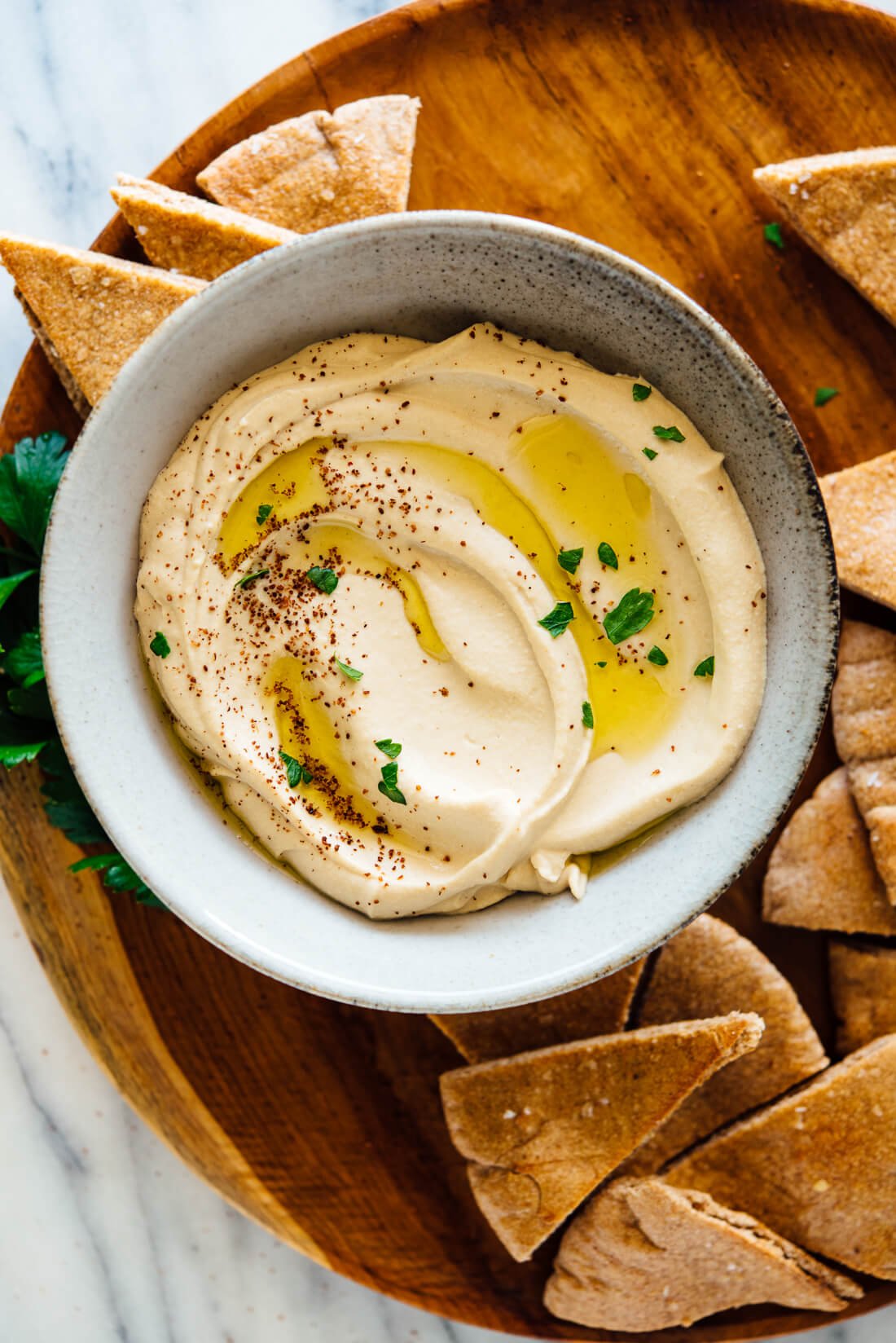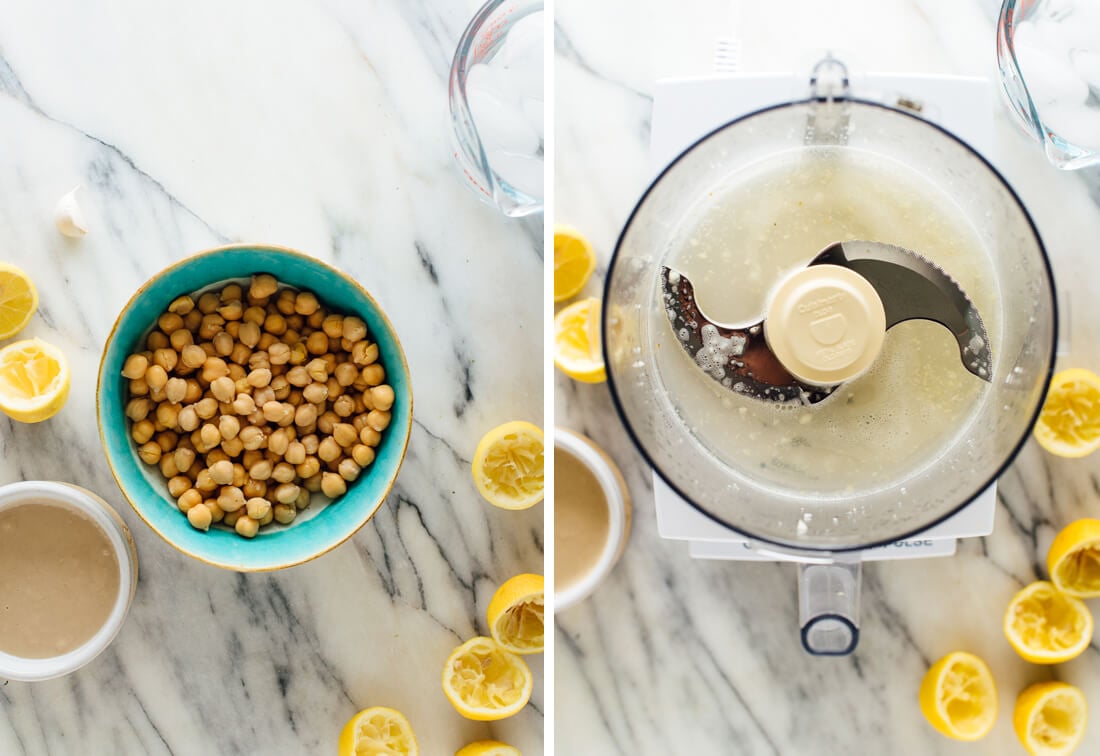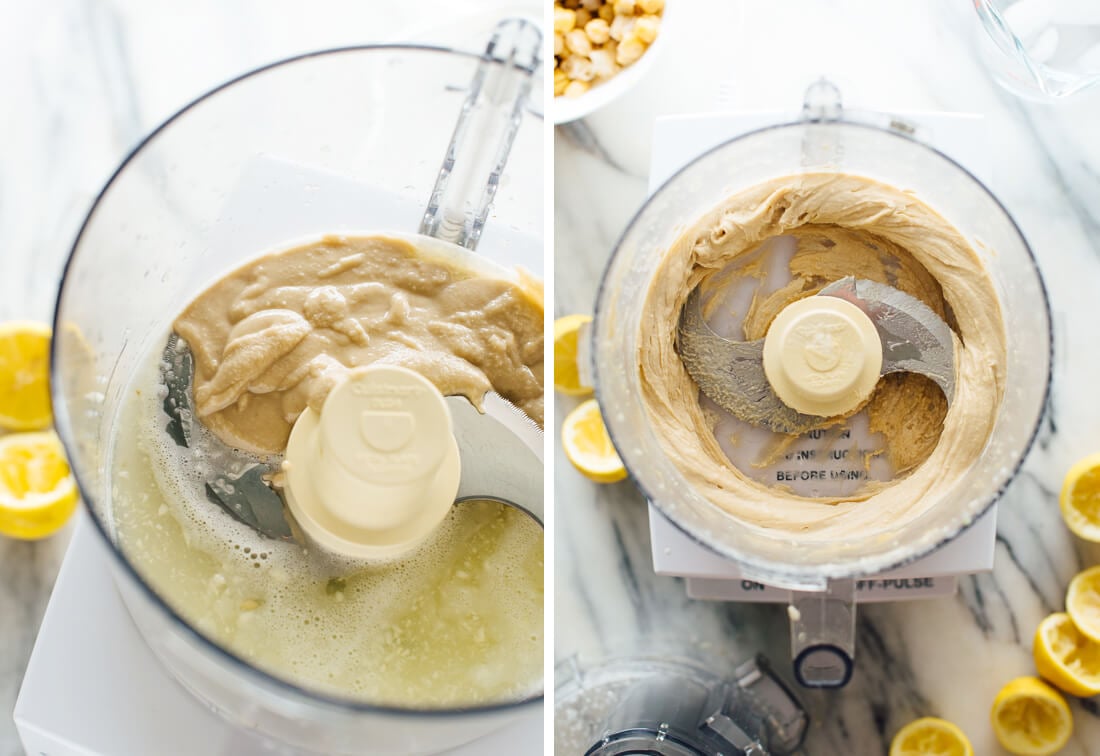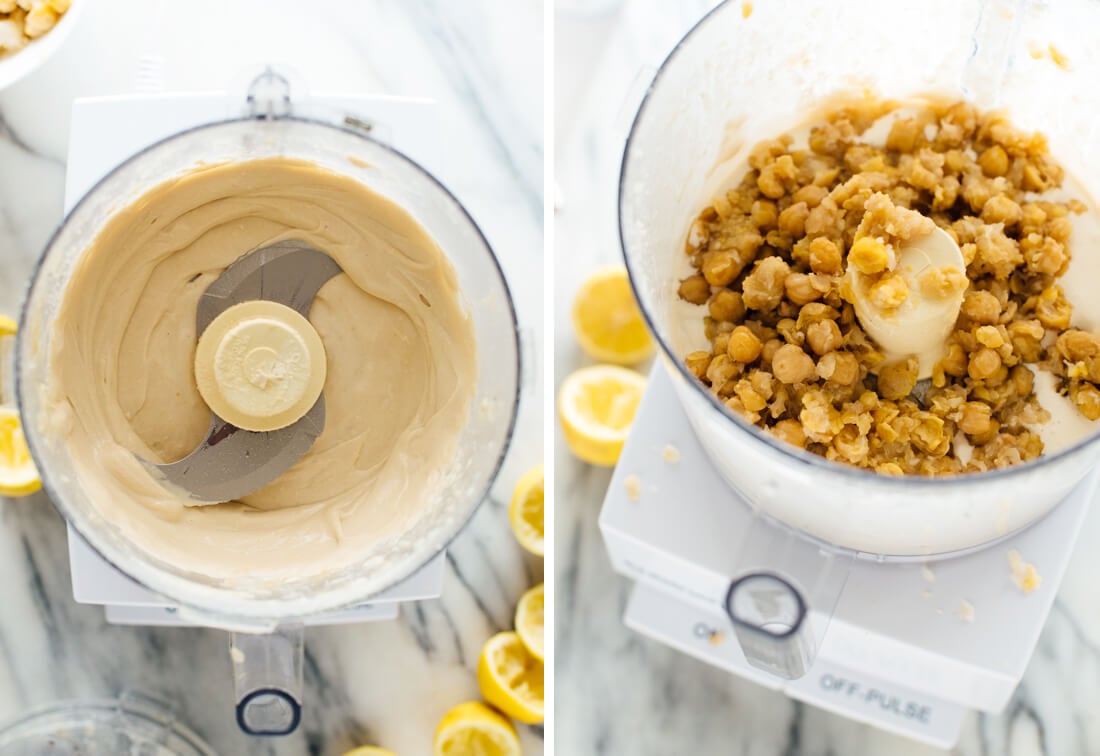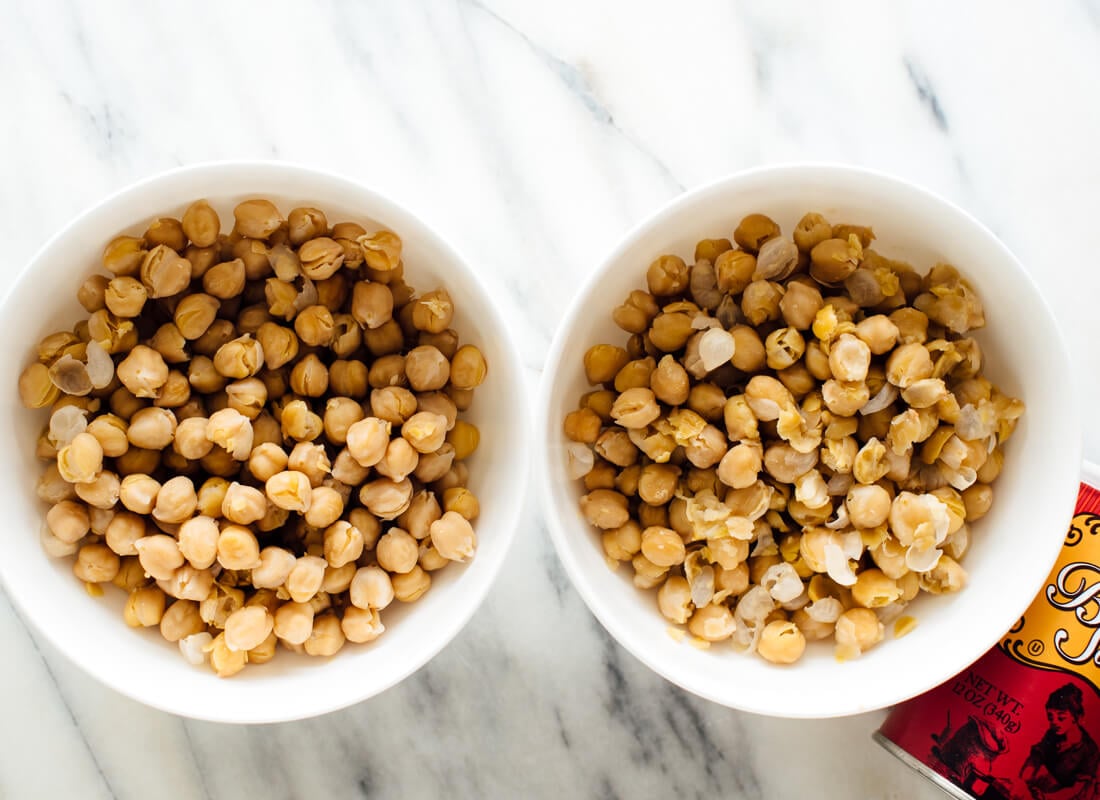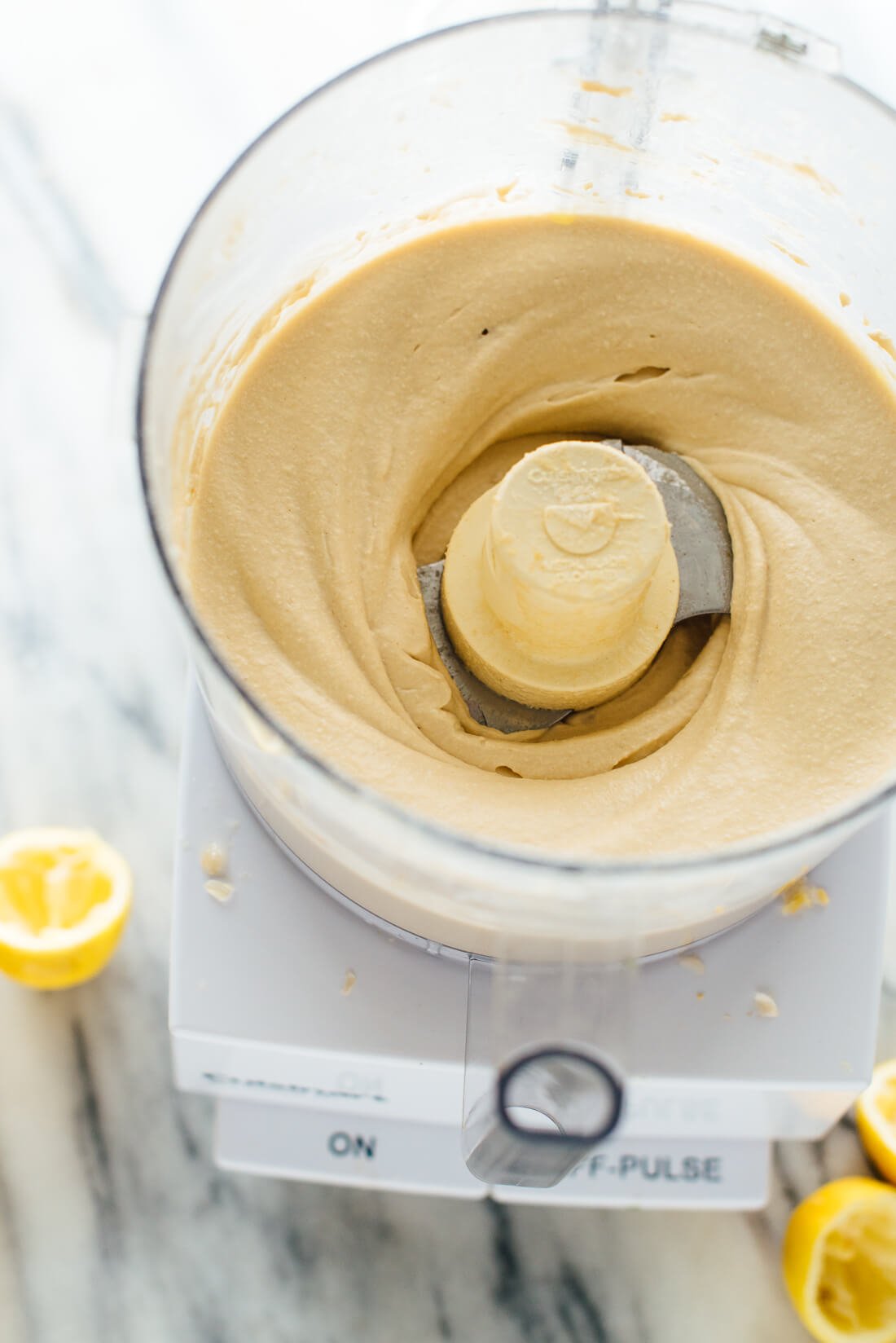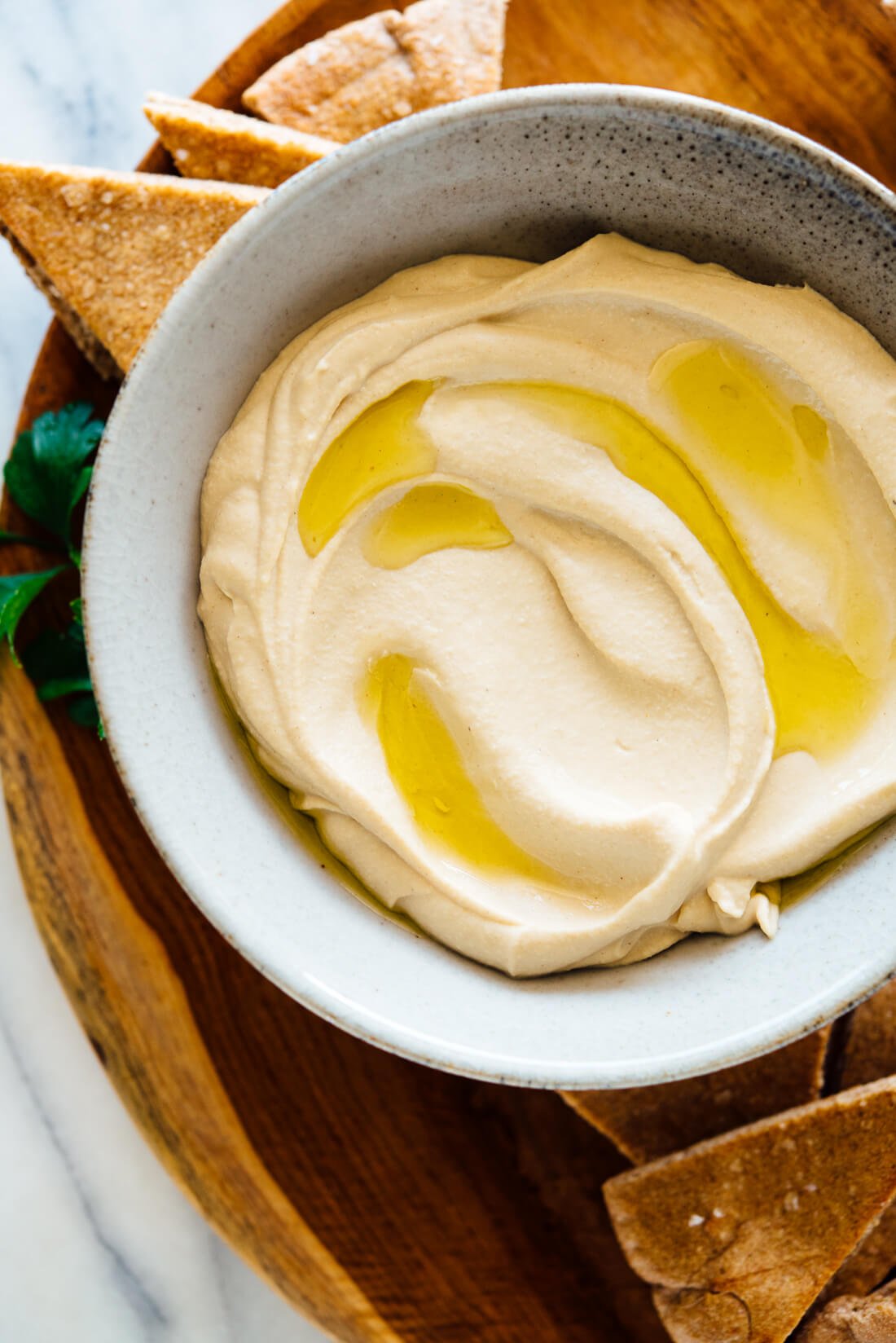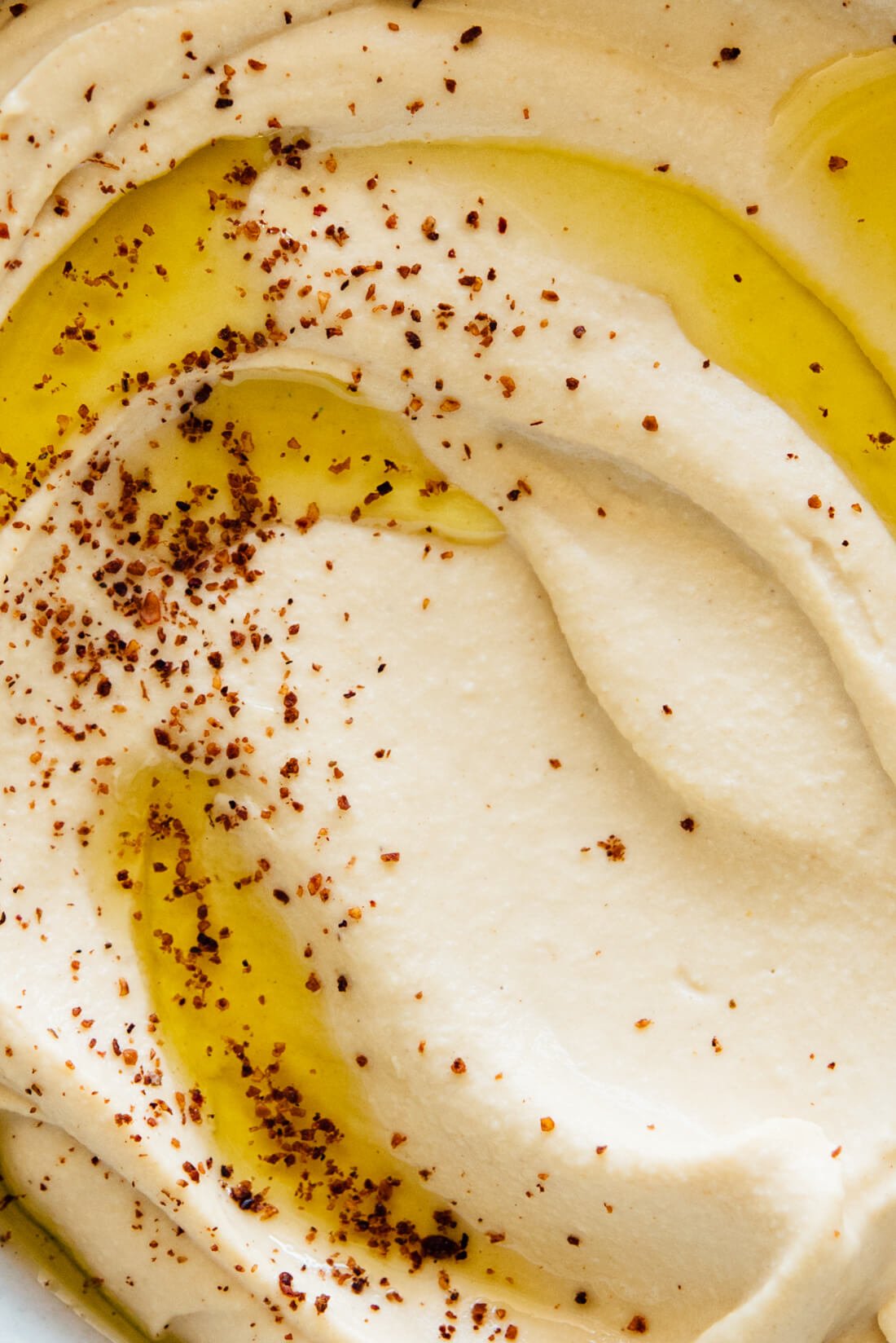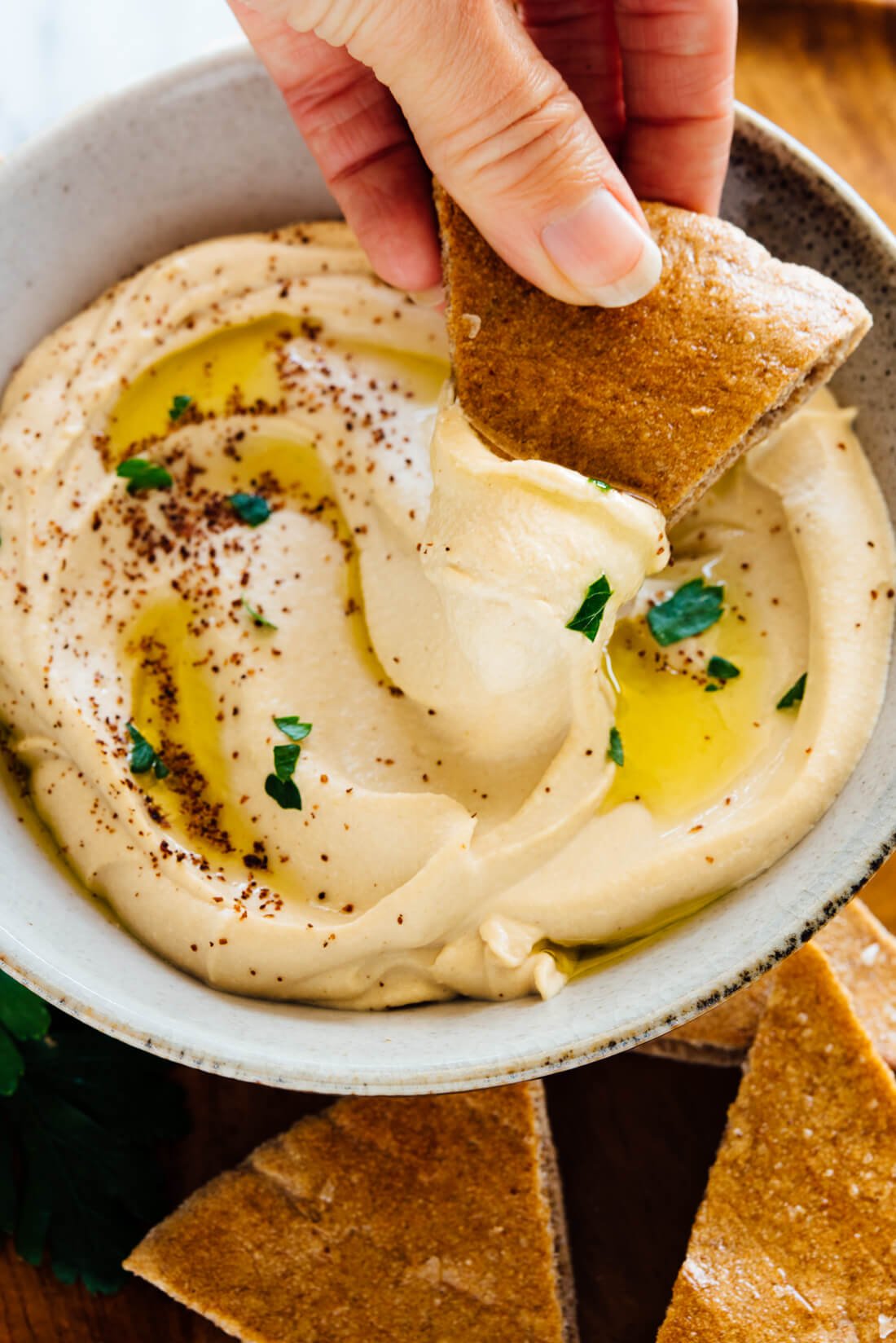The best hummus is lusciously creamy, yet somehow light and fluffy. It’s beautifully smooth and swirled, and begging to be scooped up onto a wedge of pita bread. It’s nutty and tangy, thanks to the tahini, with notes of bright, fresh lemon and mellow garlic. I encountered the most delicious hummus at Aladdin Cafe, a local Mediterranean restaurant. That hummus met all of the above characteristics, and I was hoping the owner might enlighten me with his techniques. When I asked, though, he replied, “It’s a secret,” with a sly smile and walked away.
I went home determined to learn how to make magnificently creamy hummus. First, I took the fancy flavorings out of my other hummus recipes to make plain hummus. It was dense, a little gritty, and harshly garlicky. I was so disappointed. Next, I went to Google and opened up a million tabs to learn everything about hummus. You know me. Ten hummus attempts later, I’m ready to share all of my hummus tips and tricks with you. Get ready to make the best hummus of your life!
The internet at large raves that an Israeli chef named Michael Solomonov makes the very best hummus. It’s so good that Bon Appetit named his hummus their 2015 Dish of the Year. That’s some serious hummus. Solomonov’s secret? He uses chickpeas that have been cooked until they’re so tender, they’re mushy. He cooks his chickpeas with some baking soda, too. According to Bon Appetit, baking soda “raises the pH of the water and helps the little guys break down to a soft, pulpy mass… perfect for an ultra-smooth purée.”
Overcooked chickpeas seemed like a promising idea to me. You see, I once tried to make hummus with canned chickpeas that were oddly undercooked, and they made terrible hummus. No matter how long I blended the hummus, those undercooked chickpeas never blended into creamy oblivion. Plus, baking soda helps break down the chickpea skins, which means you do not need to peel off the skins individually. Who has time for that?! I bet you don’t have time to soak your chickpeas overnight and cook them from scratch like Solomonov, either. Here’s my time-saving solution: Just boil canned or leftover cooked chickpeas with baking soda for twenty minutes. You can see the difference that baking soda makes in the photo below. See how the chickpeas on the right are popping open more? They are significantly softer in texture as well.
The chickpeas are ready to go after a quick rinse under cool running water, which rinses off the baking soda flavor and cools the chickpeas so your hummus doesn’t develop a weird outer film. Are you as excited about this as I am? You can have this incredible hummus now-ish, not tomorrow! No chickpea peeling required. I have a few more tips and techniques to making great hummus, so read on or scroll down for the full recipe and variations.
How to Make the Best Hummus
1) Mushy chickpeas
Cook canned or leftover cooked chickpeas according to step 1 below. This only adds 20 minutes to your hummus-making time, and it’s my number one tip for making perfect hummus at home. Want to cook your chickpeas from scratch? You sure can—see the recipe notes. Can you over-cook your chickpeas in an Instant Pot? I don’t recommend it—you’ll end up with a mess of chickpea mash clogging your vent and a puddle of chickpea cooking water surrounding your Instant Pot. I speak from experience.
2) Great tahini
All tahini is not created equally. When I was in Israel, Israelis’s spoke of tahini, or “t’hina,” with reverence. I learned that the best tahini comes from Ethiopia. Store-bought tahini in the U.S. varies widely in flavor, with some of them so bad that they’ve ruined my hummus. Don’t skimp on the tahini, either—you need to use 1/2 cup tahini per can of chickpeas for rich and irresistible hummus. I once toured an enormous hummus production facility and learned that they often reduce the cost of producing store-bought hummus by using less tahini. Sneaky!
3) Ice-cold water
Why do you always want to mix ice-cold water with tahini? This is another trick that I learned on my trip. I can’t find a scientific explanation, but it seems to help make the hummus light and fluffy, and lightens the color of the tahini to a pale ivory color.
4) Fresh-squeezed lemon juice
Store-bought lemon juice always tastes stale and sad, and it will make your hummus taste stale and sad. Buy lemons and your humus will taste fresh and delicious. I almost always add another tablespoon of lemon juice to my hummus for extra flavor before I plate it, but I’ll leave the tang factor up to you.
5) Garlic, mellowed in lemon juice
This is another trick from Solomonov—if you mince the garlic in the food processor or blender with the lemon juice and let that mixture rest for a few minutes, the garlic will lose its harsh, raw bite and mellow out. I tried it before and after, and he’s right! Here’s Serious Eats’ scientific explanation for why this works.
6) Olive oil, blended into the hummus and drizzled on top
Solomonov doesn’t blend any olive oil into his hummus, but I think that one tablespoon makes the hummus taste even more luxurious and creamy. I recommend it!
7) Ground cumin
The cumin is subtle and offers some “Je ne sais quoi,” if you will. It’s a common ingredient in plain hummus recipes, and makes the hummus taste a little more special.
Hummus Variations
This hummus recipe is plain (and by plain, I mean delicious), but you can blend any of the following in with the chickpeas to make variations.
Green goddess hummus: 3/4 cup loosely packed fresh, leafy herbs Kalamata olive hummus: 3/4 cup pitted Kalamata olives Roasted garlic hummus: Cloves from 1 to 2 heads of roasted garlic Roasted red pepper hummus: 3/4 cup roasted red peppers, drained and sliced into strips Sun-dried tomato hummus: 3/4 cup oil-packed sun-dried tomatoes, rinsed and drained (from one 6.7-ounce jar) Toasted sesame hummus: 1/2 teaspoon in the hummus, plus 1 teaspoon drizzled on top
Hummus Garnishes
Drizzle of olive oil Sprinkle of ground sumac, which is gloriously sour and deep pink, or paprika, which is basically flavorless but offers a splash of color Sesame seeds or seeded spice blend, such as dukkah Middle Eastern hot sauce, such as zhoug or shatta Chopped fresh parsley
Ok, let’s make some hummus! I’m dying to hear how this hummus turns out for you. Please let me know in the comments and tell me if overcooking your chickpeas makes all the difference! You can also share a photo of your results on Instagram with the hashtag #cookieandkate so we can all see your results.
Watch How to Make Hummus
How to cook dry chickpeas in a hurry for this recipe: In a large saucepan, combine 5 ounces (¾ cup) dried chickpeas and ½ teaspoon baking soda, and fill the pot with water. Bring the mixture to a boil over high heat and skim off the surface foam as needed. Continue boiling over medium-high, adding more water if you start running out, until the chickpeas are very mushy and falling apart, about 1 hour to 1 hour 15 minutes. Drain in a fine-mesh colander, rinse under cool running water, and drain well before using. Start the recipe at step 2.

